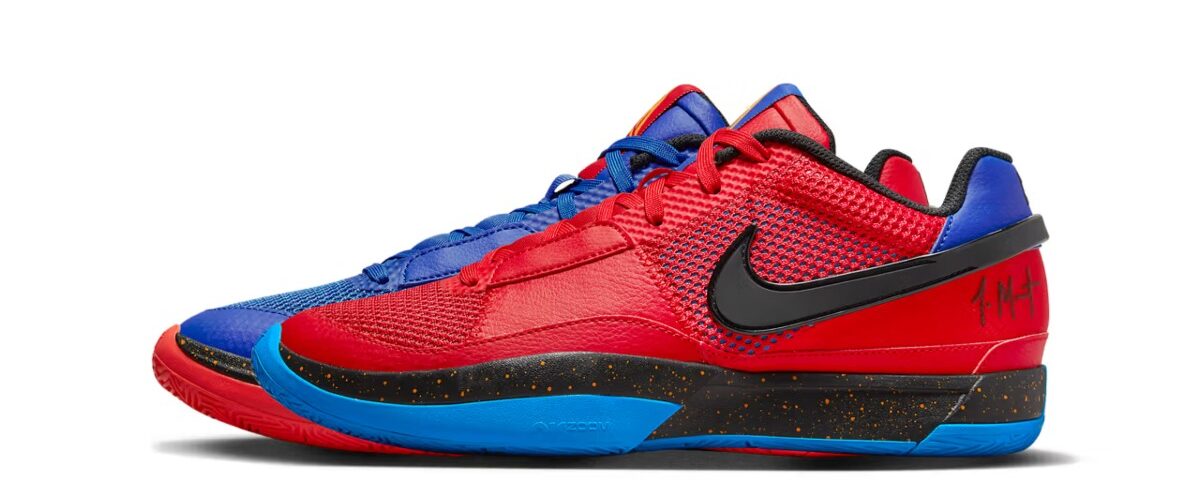Ja Morant, the Memphis Grizzlies’ star guard, has been a rising figure in the NBA, known for his explosive athleticism and captivating performances on the basketball court. His partnership with Nike, a leading global sportswear brand, marked a significant milestone in his career, culminating in the creation of his signature sneaker line. However, this collaboration was soon overshadowed by a controversy involving Morant, which tested the resilience of this partnership and Nike’s response to unforeseen challenges. This blog post delves into the background of Ja Morant’s relationship with Nike, the controversy that ensued, and the initial impact on Nike’s actions, providing a comprehensive overview of the events that unfolded.
The controversy surrounding Ja Morant emerged from a gun-flashing incident captured on social media, casting a shadow over his burgeoning career and his collaboration with Nike. The incident prompted immediate reactions from Nike, spotlighting the brand’s stance on such matters and its implications for Morant’s signature sneakers. As we explore these developments, we aim to understand the broader implications of athlete endorsements in the face of controversy, examining how brands like Nike navigate these turbulent waters.
The Controversy and Nike’s Initial Reaction
The controversy took a sharp turn when Ja Morant was seen flashing a gun in an Instagram live video, an action that quickly spiraled into a public relations crisis for both Morant and Nike. This incident not only raised questions about Morant’s off-court judgment but also put Nike in a precarious position, forcing the brand to address the situation promptly. In response, Nike made the decision to remove Morant’s sneakers from their website, a move that underscored the brand’s commitment to maintaining a certain standard of conduct for its endorsers. This initial reaction from Nike highlighted the delicate balance between supporting athlete partners and upholding a brand’s values and public image.
Following the controversy, the focus shifted to how Nike would manage its partnership with Morant and the future of his signature sneaker line. The brand’s response to the incident was a critical moment, reflecting Nike’s broader strategy for dealing with situations that could potentially harm its reputation. By removing the sneakers from their website, Nike conveyed a clear message about its stance on controversies involving its athletes, setting a precedent for how it might handle similar situations in the future.
The Release of “Hunger” Ja 1 Sneakers
Despite the controversy, Nike proceeded with the release of the “Hunger” Ja 1 sneakers on the Nike SNKRS app, a decision that was met with significant anticipation and enthusiasm from the public. The sneakers quickly sold out, demonstrating the high demand and strong market interest in Morant’s signature line. This release underscored the complex dynamics between public controversies and product popularity, highlighting the fact that controversy does not always dampen consumer enthusiasm for athlete-endorsed products.
The public and market reaction to the “Hunger” Ja 1 sneaker release was a testament to Morant’s continued popularity and the strength of his personal brand, despite the controversy. The quick sell-out and high demand for the sneakers illustrated the enduring appeal of athlete endorsements and the potential for redemption and recovery. For Nike, the successful release of the sneakers amid controversy showcased the brand’s ability to navigate complex situations, maintaining consumer interest and engagement even in challenging circumstances.
Community and Market Response
The community and market response to the release of the “Hunger” Ja 1 sneakers was overwhelmingly positive, with consumers eagerly discussing the release on social media and expressing their support for Morant. This enthusiasm translated into a booming resale market, where the sneakers fetched prices well above their original retail value. The strong community support and market demand for the sneakers indicated a significant level of forgiveness or disregard for the controversy among fans and sneaker enthusiasts, suggesting that the allure of celebrity and athlete endorsements can sometimes overshadow controversies.
The significance of the sneakers selling out despite the controversy is multi-faceted. It reflects the complex relationship between public figures and their audiences, where personal achievements and charisma can mitigate negative perceptions. For Nike and the sneaker industry at large, this phenomenon underscores the importance of understanding consumer behavior and market trends, recognizing that the connection between athletes and their fans can be incredibly resilient.
Implications for Nike and Athlete Endorsements
Nike’s silence post-release and the subsequent sell-out of the “Hunger” Ja 1 sneakers raise questions about the future of the brand’s relationship with Ja Morant and its approach to athlete endorsements in the face of controversy. The brand’s decision-making process in this situation highlights the challenges and considerations involved in managing partnerships with high-profile athletes, especially when they become embroiled in controversy. For Nike, navigating these waters requires a delicate balance between supporting their athletes and protecting their own brand reputation.
The broader considerations for how brands manage partnerships with athletes in the face of controversy are becoming increasingly relevant in today’s social media-driven world. Brands must be agile and responsive, ready to address controversies head-on while maintaining their values and commitment to their customers. The case of Ja Morant and Nike serves as a compelling example of the complexities involved in athlete endorsements, offering valuable lessons for brands on the importance of crisis management, brand integrity, and the power of redemption.


